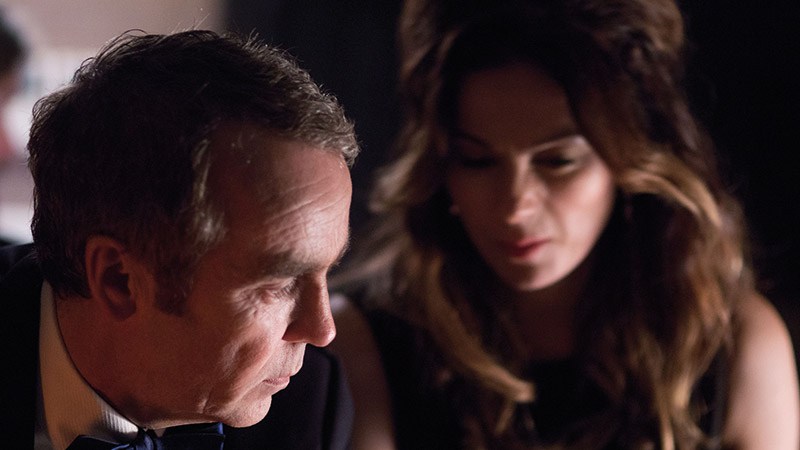Paul McGuigan is the director of Girona, one of the live action short films in competition at Irish Film Festa 2016.
Girona stars Scottish actor John Hannah (Four Weddings and a Funeral, The Mummy) and Northern Irish actress Séainín Brennan (The Fall).
On a long stormy night an encounter with a dark mysterious woman (Brennan) in a strange hotel causes a lonely man (Hannah) to confront his past…
Where was the film shot?
The film was shot in a boutique hotel in Belfast’s Cathedral Quarter, a maze of streets and side streets with Saint Anne’s Cathedral at its heart. We shot over St. Patrick’s Day when we knew the streets would be thronged with revellers, enjoying the festivities: the hotel then had to become other-worldly, ethereal, a place-apart. The location for the hotel was quite difficult to find as it needed to have a suite with an inter connecting door to another bedroom. It also needed to have a certain ambience that suited the mise en scéne.
How did you cast John Hannah to play Hart?
We never thought we could attract an actor of the calibre of John Hannah to our film, after all it was a short! When myself and the producer, Eamonn Devlin, were kicking around some names, we played a game of “in an ideal world who would we like to play Hart“, and John Hannah was on both of our lists. Of course we dismissed it as pie in the sky.
Then we spoke to the agent of another actor we were interested in and she also happened to be the agent for John – she asked if she could show the script to him. The next day I got a call from John saying that he loved the script and the character and really wanted to play the role. He came over to Belfast for four days and was amazing, generous, erudite and most importantly, great craic.
As a director, your attention is very focused on details: how did you work on the visual aspect of the story?
The film is quite claustrophobic, because it takes place in a hotel room: moving the camera becomes a luxury, so the fine details must reveal character and reveal the story. Hart values substance, his father’s battered Rolex sits proudly on his wrist, his silver razor catches the light as he shaves, sending shards of light across the darkness of the bathroom. The sound of a sharp blade harvesting stubble cuts through the silence.
The film is symmetrical, and like Newton’s third law, for every action there is an equal and opposite reaction: Sophie puts on her make-up, Hart shaves in the mirror; Sophie puts on her stockings, Hart fixes his braces. Karma is the great law of cause and effect, of action and reaction, which directly influences their very existence.
The framing reflects symmetry and balance, the yin and yang. Longish takes, giving the actors space to explore their characters, pervade. The camera moves rather than cuts, close-ups are for emphasis. Sometimes a shadow appears before its owner follows. Characters move through pools of light, reflecting their lives, inhabiting dark spaces synonymous with their characters.
I looked at classic films that inhabit small spaces, the Overlook Hotel in The Shining, Alain Resnais’ Last Year in Marienbad, and Wes Anderson’s Hotel Chevalier. The characters become intertwined with the location – this was important to our film, one couldn’t exist without the other.

